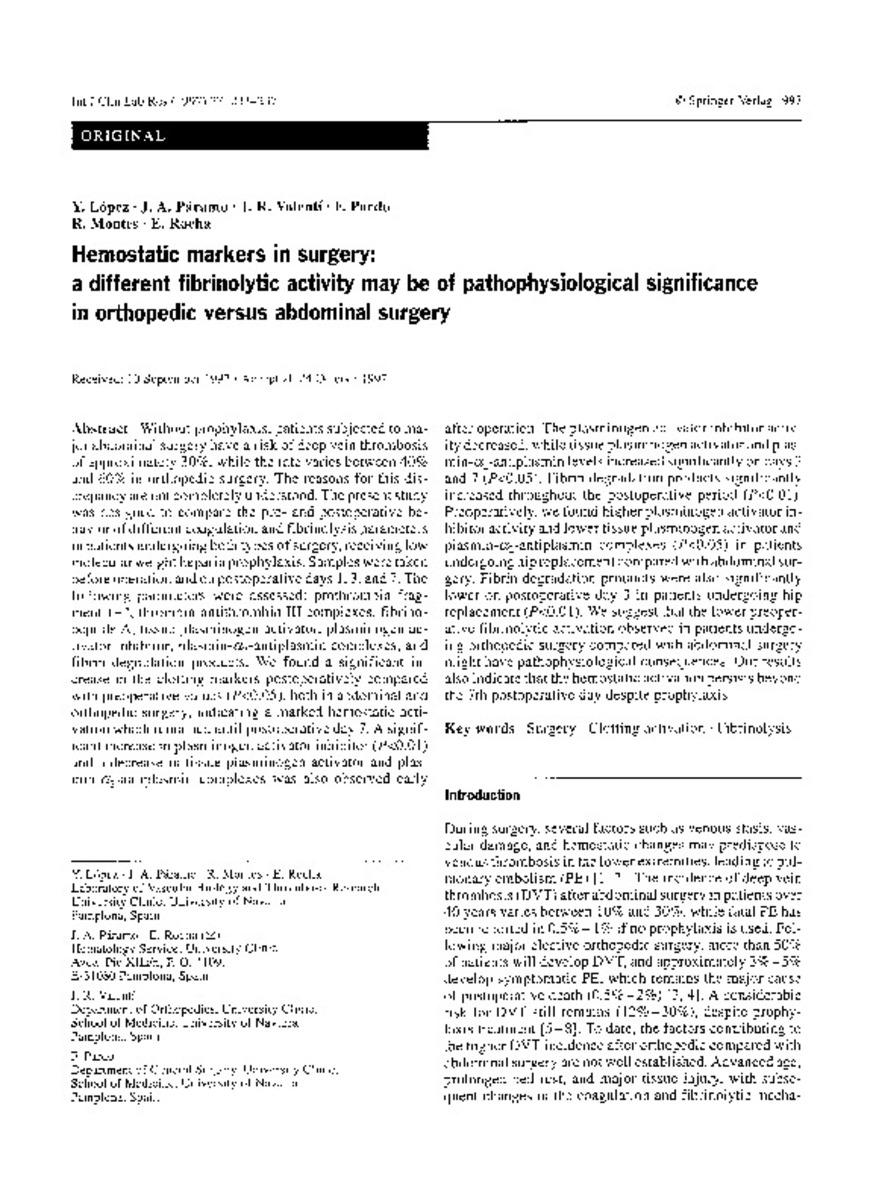Hemostatic markers in surgery: a different fibrinolytic activity may be of pathophysiological significance in orthopedic versus abdominal surgery
Palabras clave :
Surgery
Clotting activation
Fibrinolysis
Fecha de publicación :
1997
Editorial :
Springer Verlag
Cita:
Lopez Y, Paramo JA, Valenti JR, Pardo F, Montes R, Rocha E. Hemostatic markers in surgery: a different fibrinolytic activity may be of pathophysiological significance in orthopedic versus abdominal surgery. Int J Clin Lab Res 1997;27(4):233-237.
Aparece en las colecciones:
Estadísticas e impacto
0 citas en

0 citas en

Los ítems de Dadun están protegidos por copyright, con todos los derechos reservados, a menos que se indique lo contrario.







